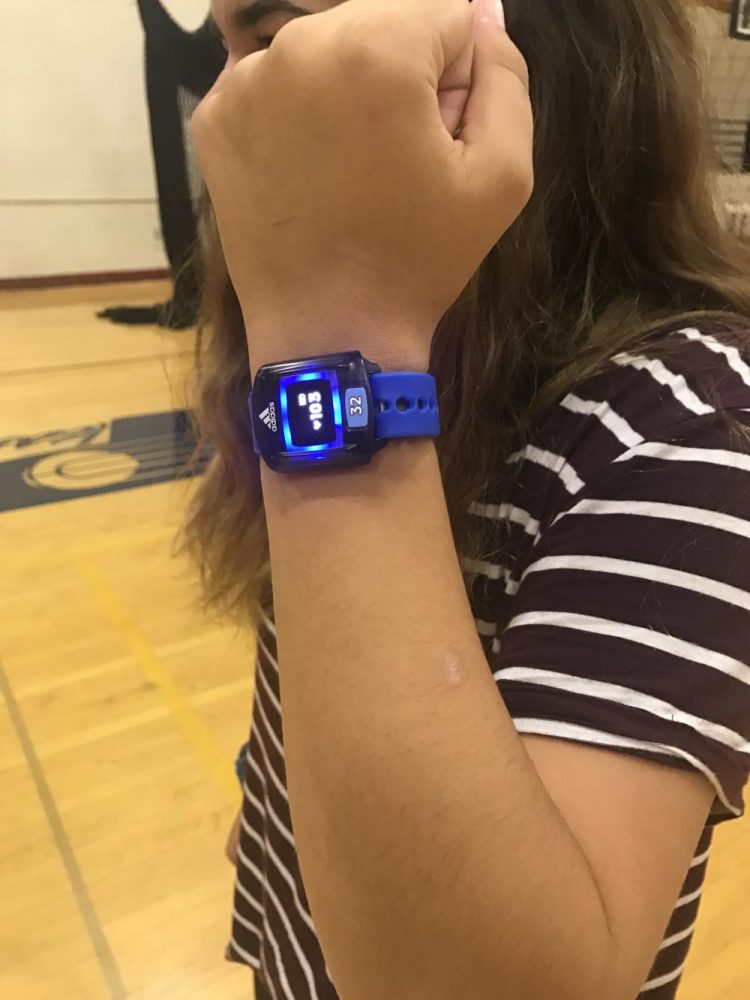Recently, a cringe-worthy addition has been made to the Pleasant Valley High School’s gym curriculum. Students are now required to wear wrist watches, detecting the heartrate of the students. In order to earn the gym points for the day, the heart rate must be in the yellow zone, which is 110 beats per minute, for 20 minutes. The so-called “goal” of the heart rate monitors is to motivate students who haven’t put in effort in the past. As the few try-hard gym athletes are all about the heart rate monitors, the average gym kid is going to find a way to put in as little effort as possible. Gym teachers think that the heart rate monitors are the new and improved way to get students up and moving. Little do they know that there’s a way to cheat the system.
In order to get into the red zone, which is higher than the yellow zone, very intense exercise has to be put into the workout. However, it’s almost unattainable for numerous students to reach the goal, due to the heart rate monitors malfunctioning. That’s where the cheating method comes into place. It is accomplished by flicking the wrist that has the wristwatch on it in a very intense manner. The watch will be convinced that genuine, hard work is being put into the workout. Getting into the red zone is nearly impossible for many gym students, so flicking the wrist is the only escape route. Although the cheat system is beneficial towards the academic aspect of gym, improving overall health gets overlooked, since so many students are worried about making sure their grade is where they want it to be. Since the system can easily be cheated, the $35,000 spent on the heart rate monitors was a waste of money and time.
Heart rate monitors malfunctioning put the student’s grade at risk. The grade for the day is determined by the data from the watch, not from the actual effort put into gym class. Keshav Wagle, a senior student in 4th period gym, has expressed concern towards the grading system. “It’s sad because it’s something that determines our grade, and doesn’t give an accurate measurement of how hard we are working.”
On top of grade expectations, the heart rate monitors take away time from gym class. Finding the personalized number on the watch for a student and having to wait in line to activate the watch takes longer than it would take going the old school route and taking attendance on a sheet of paper. Some classes take longer than others, depending on how many students are in class at once. For example, some of the smallest gym classes take up to ten minutes to get heart rate monitors on. Imagine how long some of the larger classes take to put on the heart rate monitors. Heart rate monitors are supposed to serve the purpose of getting the students on their feet and active but instead, a large chunk of the class is spent waiting in line.
When participating in gym class, many have experienced their wrist watch malfunctioning. The malfunctioning discourages students, causing many to not work as hard. Kaylynne Nowack believes that heart rate monitors are not the solution to a true workout. “It’s easy to tell if someone is working hard in gym by the amount of effort exerted, such as running out of breath or sweating. The heart rate monitors can’t determine these factors.”
Overall, abolishing the heart rate monitors would create a happier, stress-free atmosphere. The cheating system wouldn’t exist, the anxiety of failing gym would disappear, and improving the health of students during a full class period would be possible.









